The pan is one of the main items of daily use, so it eventually becomes covered with a layer of soot. This problem must be dealt with, since a layer of soot not only spoils the aesthetic appearance of the dishes, but is also dangerous to health.


Causes of pollution
Typically, pans are used for cooking or for heating ready-made meals. Each time it is used, fat is poured onto it, which covers the product with a thin layer. Residues of fat remain on the inner walls.
Nagar is a layer of dark color, which is characterized by stickiness and a loose consistency. It appears constantly during the application of the pan. There is the possibility of carbon deposits even on dishes that are near the place of cooking. It is not much different from ordinary fat, but it is very deeply eaten into the surface.

The pan gets dirty not only inside, but also outside. It remains soot in contact with the burning gas, and this is due to various additives.
Normal dishwashing can not cope with the elimination of burnt fat, which accumulates over time on the coating, and then to eliminate it you need to make maximum efforts.
You should take it as a rule - thoroughly wash the pan from fat and soot at least once a monthand she will always be clean. To cope with various types of contamination, washing dishes in the dishwasher, while choosing the mode of pots. But this option is not suitable for aluminum pans.
Contamination in the pan negatively affects its properties. So, a layer of soot at the bottom of the product prevents its rapid heating. To prevent the formation of a thin black crust on the surface of the pan, you should thoroughly wash the product inside and out using various cleaning agents.

What to consider?
In order to easily and quickly clean the pan from soot, it is necessary to choose cleaning agents depending on the material of the product. Modern pans are made from a variety of materials. The same tool can manifest itself in different ways when in contact with various materials.
Please note that The aluminum and cast-iron skillet can be cleaned with very strong detergents using alkalis and acids. Non-stick models require delicate care, as an improper cleaning agent can completely ruin the product.
Most modern pans are made of cast iron, aluminum, teflon and ceramic. The most popular are ceramic models, since they are the least overgrown with soot, and also such a coating repels grease. They wash quickly and easily.

To eliminate contamination, simply wet the product and rub it with a sponge and detergent. But ceramics also have disadvantages. She is afraid of a sharp change in temperature, so a hot product cannot be washed immediately in cold water.
Cast iron refers to strong metals that are not afraid of contact with various means, therefore You can use various methods to combat carbon deposits:
- The pan can be heated very much over a fire, then gently pry off a layer of soot, and it will fall off on its own. But this method requires adhering to security measures.
- To clean the dishes inside, you can use sea or river sand. In the pan you need to pour sand, put it on a small fire and wait a few hours. After this procedure, you need to get rid of the sand and rinse the product.
- Cast iron scale can be removed with activated carbon. It is necessary to moisten the side walls and the bottom of the tank and sprinkle everything with activated carbon, previously crushed into powder. After one hour, coal can be washed off.

- A great way is to soak the pan in a specially prepared solution. It will require 9% vinegar and water, while maintaining a proportion of 1: 3. The pan with the pan must be put on a small fire and brought to a boil, then left in the solution for about two hours. After the pan is enough to rinse under the tap.
- You can dip a cast-iron skillet in a container with a solution of citric acid. To prepare it, you need to take 1 tablespoon of powder per liter of water. The procedure should be performed about 15 minutes.
- Cast iron cookware can even be cleaned mechanically. To do this, use a metal brush. But this method is only suitable for eliminating fresh contaminants.

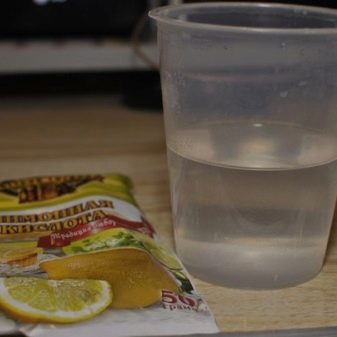
Stainless steel pans can be cleaned in several ways:
- It is necessary to moisten the bottom and walls of the product well and sprinkle with soda, since it allows you to soften the carbon. No need to exert efforts during processing, as particles of soda can damage the surface of the product. The dishes should be left for 12 hours, and then only rinse with water.
- An excellent option is to use activated carbon. To eliminate carbon deposits, it is enough to cook a paste of water and crushed coal. It must be applied to the places of contamination and left for 20 minutes. Then rinse under running water.
- A good cleaner is rock salt. The pan must be put on a small fire, pour 100 g of salt into it and stir for 20 minutes, then turn off the heat and leave for another three hours. After its application, soot is easily removed mechanically.


The Teflon pan has a non-stick coating, so the food almost does not remain on the walls of the dishes. If a deposit has nevertheless appeared on its coating, it should be remembered that it is strictly forbidden to use abrasive products, brushes and metal washcloths for cleaning it. Sudden changes in temperature should also be avoided.
To clean a Teflon pan, you can use one of the following methods:
- You need to pour hot water, add 4 tablespoons of soda and a few drops of dishwashing detergent to the pan. She needs to be left for half an hour. After such a solution, carbon deposits can be very easily removed.
- To clean carbon deposits on both sides of the dishes, you can use soda ash. A special solution should be made. Three liters of water will require 200 ml of dishwashing detergent and a fourth of a glass of soda. The pan should be dipped in a solution and boiled over low heat for half an hour.
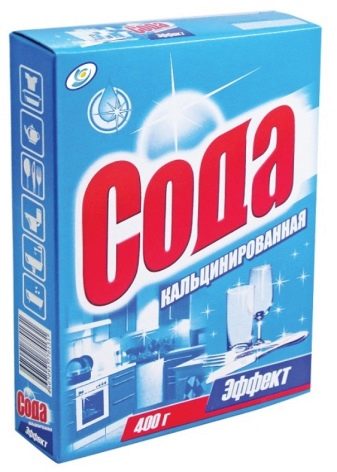

Aluminum and ceramic pans require careful handling. For ceramics, you only need to use detergents intended for washing ceramics, and also forget about hard sponges and do not use cold water.
To eliminate small impurities on ceramics, rags previously treated with alcohol will help. In order to get rid of a strong coating, boiling is ideal. In the pan you need to pour water, a few drops of an ordinary dishwashing detergent and boil for about 30 minutes.


Pans made of aluminum should not be brushed with metal and it is undesirable to wash them in dishwashers. Aluminum very quickly darkens, and also loses its properties.
The following methods can be used to clean aluminum cookware from carbon deposits:
- It is necessary to prepare a mushy mixture of baking soda and warm water, then use this product to process the walls and the bottom of the pan, but without making any effort.
- Equally effective is the option of boiling a pan of aluminum in a bowl with the addition of soda. Only half an hour is enough for the soot to easily move away from the walls.
- You can remove carbon deposits from the aluminum coating with an old brush and toothpaste. After the cleaning procedure, just rinse the dishes.


Funds
The choice of means for removing carbon deposits from the pan at home depends on the material of the dishes, as well as on the place of accumulation of carbon deposits. Contamination can form both on the outside and on the inside of the product. You can clean dishes with folk remedies prepared from what is in the house. Difficult spots are rubbed with acid or hydrogen peroxide.

Soda
Using baking soda, you can wipe away dirt from aluminum or cast-iron pans.
The most effective and popular way is to boil a pan completely immersed in a container of water and soda. To prepare the solution, you need 1 tablespoon of soda per 1 liter of water. The product needs to be boiled for only 10 minutes, and then left for another half hour in the solution. After the pan you need to wipe with a brush or sponge to remove carbon deposits.
In order to qualitatively remove fat deposits from the inner surface of the pan, you need to put it on the fire and pour 200 ml of water, 100 ml of vinegar and 2 tablespoons of soda. When the solution boils, it is necessary to reduce the heat and add another 50 g of soda. Dishes should be boiled until the liquid has completely evaporated. After the pan must be washed in warm water. Perform all actions necessary in the mask, because you can get severe burns from the evaporation of soda.

The pan can be cleaned in an easier and simpler way. Pour lemon juice or vinegar into it and add a couple of tablespoons of soda. Due to the effects of the chemical reaction, contaminants will become more susceptible to cleaning.
Glue
The use of glue to clean pans used to be very common, but is still relevant today.
To prepare a cleanser, you will need one piece of laundry soap, 100 g of stationery glue and 100 g of soda. Of the tools you need to stock up with a penknife and a metal "brush". This option is great for cleaning cast iron and aluminum products.

The product cleaning process includes several basic steps:
- You should take a large pot and fill it with water so that it completely covers the pan.
- Boil water, reduce heat and pour grated laundry soap, glue and soda. It is necessary to perform all actions in a special mask, as well as open a window or turn on the hood.
- Dip the pan into the prepared solution and boil until the carbon is softened. You can add water if its amount begins to decrease.
- When the soot will easily lag behind the walls of the dishes, the pan can be removed from the solution and cleaned with a "brush" or knife.
- This procedure is suitable for pans with a removable handle, so it must be removed. You can hold the wooden handle a little in boiling water, but this is not suitable for a plastic handle. Care must be taken that the handle does not submerge in water. But even hot steam can adversely affect the appearance of the plastic handle.

Activated carbon
Cleaning the pan with activated carbon is quite rare, but it is also effective in removing carbon deposits. Activated carbon is ideal for cookware with enamelled or non-stick coating, made of aluminum or cast iron.
You need to take 10 tablets of coal and crush them into powder. It should be mixed with a little water until gruel forms. Cover it with contaminated places and leave for 20 minutes. After that, pour water into a pan and heat to a boil. Then leave it to cool completely and rinse under water.

Ammonia and borax
The use of ammonia is ideal for cleaning aluminum products. But it does not always help to cope with heavily polluted places.
It is necessary to take 10 g of borax and add one drop of ammonia to it. A sponge is required to clean the pan. It needs to be moistened in the prepared solution and wiped places with soot.
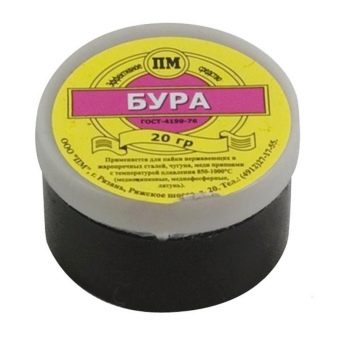

External cleaning methods
To wash an old frying pan at home from black soot, fat or burnt oil, you can use one of the above methods. It is enough to use folk remedies, although you can buy special cleaning products. You can clean the pan by immersion in a pot of water or over an open fire. Using improvised means, you can easily clean not only the pan, but also the lid.
To get rid of old burning or a thick layer of fat, mechanical cleaning will help. A drill with a special nozzle in the form of a brush with a pile made of wire will help clean out greasy dirt. Effectively get rid of the stubborn soot will help a vibration grinder. Mechanical cleaning suitable exclusively for cast iron products. It is strictly forbidden to use it for non-stick modification of pans.

Oven cleaner can help get rid of a cleaner for ovens. Various manufacturers make effective products. After using chemicals, thoroughly wash the pan.
How to wash inside?
Folk remedies allow you to clean dirty pans both outside and inside. If food, for example, scrambled eggs, is burnt, then with the help of improvised means the product can be easily resuscitated.
First assistants are soda, vinegar, citric acid and water. Sprinkle a little citric acid on a burnt place and sprinkle vinegar on the bottom. Leave the dishes for a few minutes, then pour warm water and put on a small fire, it is not necessary to bring to a boil.The pan must be cooled, drained dirty water and washed with soda in warm water.

An excellent solution for eliminating burnt food is mustard powder. It perfectly helps to wash a burnt out pan from the dirt from the house and eliminate fat. The hot product must be covered with powder and add a little water. After two hours, you should drain the dirty water and eliminate all the burning.
A more effective way is to use laundry soap, which is indispensable for boiling. Three gallons of water will require 120 g of soda and a bar of soap grated for better dissolution in water. The prepared solution must be heated on fire. 5 minutes before boiling, you can dip the pan into it and boil for several minutes. Next, the product must be left in a soapy solution for two hours, after which it is possible to easily remove all contaminants.
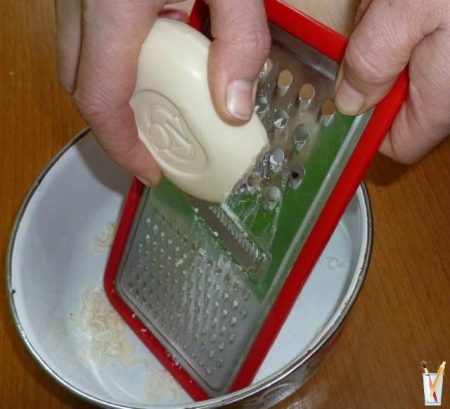
How to restore coverage?
After thorough cleaning, the pan loses a layer of soot, but at the same time the non-stick layer and the food starts to burn on it. Experts recommend after removing contaminants from the product perform some actions to restore this layer:
- You should take table salt and fill it with the whole bottom of the pan.
- Put the product on fire. When the salt begins to crack, you need to eliminate it, and rinse the pan with water.
- Outside and inside, the product must be thoroughly smeared with sunflower oil, and then put in a heated oven for about one hour. The oven temperature should be around 100 degrees.
- Next, you need to remove the pan from the oven and wipe off the excess oil with a paper towel.
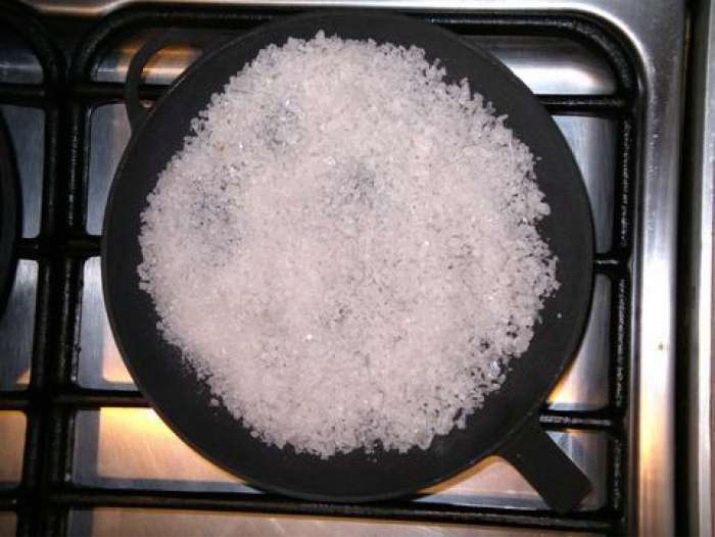
Prevention
In order not to look for ways to eliminate carbon deposits from the pan, you must adhere to several simple rules during its operation. Proper use of the product will help not only to maintain an attractive appearance, but also a teflon coating.
Basic Rules:
- After cooking in a frying pan, it must be thoroughly wiped with a paper towel to remove dirt, grease and food debris. Old fat accumulates very easily, and its cleaning will take a lot of time and effort.
- Before use, the new product should only be washed with water and a dishwashing detergent.
- Do not leave the pan dirty for a long time, as this contributes to the formation of soot.

- Teflon models are strictly forbidden to heat more than 250 degrees. This can lead to deformation of the product and loss of non-stick properties.
- When cooking in a Teflon pan, use exclusively wooden or plastic spatulas, since metal spatulas can leave scratches and damage the non-stick coating.
- To prevent the occurrence of a thick layer of soot, one of the cleaning methods should be used once a week to eliminate it. This will avoid the formation of fat in hard to reach places.
- If the deposit appears again with regular cleaning of the pan, then the Teflon layer is already damaged. Therefore, it is strictly forbidden to use such a product for cooking, since harmful substances from the base of the dishes will enter the food. You must purchase a new pan.


For information on how to wash a pan from carbon deposits, see the next video.










